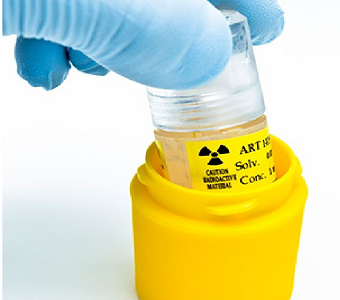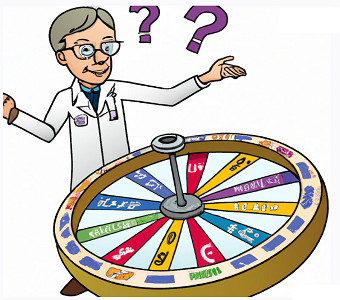Since we last profiled Cubist Pharmaceuticals (CBST) in August, shares of the antibiotics company have posted a somewhat muted performance, rising less than 8% versus almost 16% for the NASDAQ Biotechnology Index. The company spent much of the past several months without significant news flow and posted Q3 results that missed consensus estimates on both the top and bottom lines. But Cubist’s underperformance has created an opportunity in one of the leading antibiotics developers ahead of a catalyst-rich 2014. In the past several weeks, Cubist has released key phase III data for Ceftolozane/tazobactam, and with potential FDA approval (and possibly commercial launches) for two key pipeline assets next year, we expect CBST to perform as the company expands its antibiotic franchise and begins to realize the acquisitions of Trius Therapeutics and Optimer Pharmaceuticals (which we covered in detail in August).
Cempra announced on Monday morning that the FDA has accepted the New Drug Application (NDA) for tedizolid in acute bacterial skin and skin structure infections (ABSSSI). The FDA has assigned a Prescription Drug User Fee Act (PDUFA) action date of June 20, 2014, a 6-month window in which CBST should garner significantly more interest.
Q3 2013 Results: Reconciling Revenue Growth & Earnings Declines
For the third quarter of 2013, Cubist posted results that, on the surface, were mixed. Consolidated revenues of $265.993 million (up 11.68% year-over-year) missed consensus estimates by $1.96 million, and pro forma EPS of $0.41 not only fell by over 33% year-over-year, but missed consensus estimates by 12 cents.
Cubist Pharmaceuticals Revenue Growth (in Thousands of $)
|
Q3 2013 |
Q3 2012 |
Y/Y Change |
Q1-Q3 2013 |
Q1-Q3 2012 |
Y/Y Change |
|
|
Cubicin Revenue |
$229,920 |
$208,272 |
+10.39% |
$659,082 |
$593,159 |
+11.11% |
|
Entereg Revenues |
$13,676 |
$10,082 |
+35.65% |
$37,265 |
$29,230 |
+27.49% |
|
International Revenue |
$12,987 |
$11,959 |
+8.60% |
$40,349 |
$35,976 |
+12.16% |
|
Service Revenue |
$3,755 |
$7,215 |
-47.96% |
$11,044 |
$19,544 |
-43.49% |
|
Other Revenue |
$5,655 |
$653 |
+766.00% |
$6,961 |
$2,531 |
+175.03% |
|
Total Revenue |
$265,993 |
$238,181 |
+11.68% |
$754,701 |
$680,440 |
+10.91% |
During the third quarter, Cubicin revenues continued to grow, expanding by over 10%. Entereg revenues also continued to grow, with double-digit growth in both Q3 2013 and the first three quarters of the year, and we expect further growth in Q4 given that in October the FDA approved Cubist’s sNDA to expand Entereg’s label to include use following surgeries that include partial bowel resection with primary anastomosis. International sales continued to post steady, albeit unexciting growth, and Cubist’s international sales helped boost the company’s other revenue during the quarter, which features a $5 million milestone payment from Novartis (NVS).
Cubist used its Q3 results to adjust full-year guidance; although the company trimmed its domestic Cubicin sales forecast to a new range of $885-$900 million (down from a previous range of $900-$925 million), Cubist raised its international Cubicin guidance from $53-58 million to a tightened range of $56-$58 million, and on its Q3 earnings call, management noted that with associated changes in other revenue and service revenue growth, the midpoint of Cubist’s consolidated revenue guidance range remains unchanged at $1.0225 billion. The decline in Cubist’s guidance range for domestic Cubicin sales is driven by changes in CMS reimbursement policies, which have helped pressure Cubicin’s market share, despite revenue growth of over 10% in Q3, Cubicin volumes fell by around 1% as the its market share fell by around 50 basis points. However, Cubist reiterated its guidance for peak Cubicin sales of over $1 billion, and COO Robert Perez noted that internationally, Cubicin continues to see progress. During the quarter, Cubicin was approved for sale in China for the treatment of Gram+ and bloodstream infections (in China, Cubicin is marketed by AstraZeneca (AZN)), and that outpatient growth in international markets continues to outpace domestic outpatient growth by over five percentage points due to what Perez diplomatically described as “highly integrated health systems that are further along the continuum of total health outcomes management.” On the Q3 earnings call, the company noted that there has been a broad-based decline in home-care patients in the U.S. And while the decline is not worrisome, it was large enough to warrant a reduction in Cubicin revenue guidance for the year. Cubist’s revenue base is diverse enough that its midpoint guidance has been preserved.
Cubist earnings plunged by over 33% during the third quarter (down more than 32% year-to-date). The cause of this EPS decline lies fully in Cubist’s R&D expenses, which continued to surge during the third quarter, rising by more than 75% as Cubist moves through several Phase III programs. Cubist closed the acquisition of Optimer on October 24 (the takeover of Trius Therapeutics closed on September 11), thus Cubist’s Q3 results do not include Optimer. While R&D expenses have surged, Cubist has kept other expenses in check. The company improved its gross margin to 77.07% during Q3 2013, versus 76.6% a year ago, and although pro forma SG&A expenses (adjusted for acquisition costs) accounted for 17.63% of revenues (versus 16.97% a year ago), this ratio will likely decline as Cubist begins to integrate Optimer’s operations into its own and extract cost synergies from its sales force. We expect more color on this in January when Cubist posts Q4 results.
Pipeline Progress: Moving to Expand the Revenue Base
On November 25, Cubist released new data from a key Phase III trial for Ceftolozane/tazobactam in cUTI (complicated urinary tract infections), one of the three indications for which it is being developed. Ceftolozane/tazobactam met its primary endpoint of non-inferiority to levofloxacin, which was defined by a combination of microbial eradication and the clinical cure rate 5-9 days after end of therapy. Perhaps more notable is that despite the fact that this Phase III trial was not designed to test superiority over levofloxacin, the lower bound of the confidence interval in favor of Ceftolozane/tazobactam was positive, indicating statistical superiority to levofloxacin. Ceftolozane/tazobactam’s safety profile was also acceptable, with an adverse event rate of 34.7% versus 34.4% for levofloxacin, with the most common adverse events being nausea, constipation, hypertension, and diarrhea. Cubist noted that this adverse event profile was consistent with published Phase II data.
Additionally, on December 16 Cubist released data from a second Phase III trial of Ceftolozane/tazobactam (in combination with metronidazole) in complicated intra-abdominal infections (cIAI), in which the drug met its primary endpoint of non-inferiority versus meropenem (defined as the clinical cure rate 26-30 days after the start of treatment). As was the case in cUTI, Ceftolozane/tazobactam’s safety profile was acceptable, with an adverse event rate of 44%, versus 42.7% for meropenem, with the most common adverse events in the Ceftolozane/tazobactam arm being nausea, diarrhea, fever, insomnia, and vomiting.
With positive Phase III results in both indications, Cubist has announced that it plans to file a New Drug Application with the U.S. FDA for Ceftolozane/tazobactam in the first half of 2014, with an MAA to follow in the 2nd half of the year. With peak sales estimated at $1 billion, FDA/EMA approval will drive meaningful growth for Cubist for years to come, given that Ceftolozane/tazobactam has patent protection through 2024 (2023 in Europe). As Cubist prepares for approval filings in cUTI and cIAI, the company is also testing Ceftolozane/tazobactam in hospital-acquired/ventilator associated bacterial pneumonia (also known as HABP/VABP), and Phase III trials in this indication are planned for 1H2014.
Cubist is awaits FDA approval for tedizolid phosphate (the NDA was submitted on October 22). As a reminder, peak sales estimates for tedizolid phosphate stand at around $750 million, and investors can refer to our previous coverage for more detail on its commercial potential. We believe that Cubist’s relative underperformance since August has created an attractive entry point for long-term investors to add to or initiate positions ahead of a catalyst-rich 2014. Cubist has the potential to launch two new products with combined peak sales of well over $1.5 billion.
We have long argued that Cubist should be seen as a long-term investment; although Cubist may not be as “flashy” or as cutting edge as a development-stage oncology company, it does not need to be. Cubist offers investors something that those companies cannot: a semblance of stability within an inherently volatile sector. Cubist has built itself into the world’s 13th largest biotechnology company (by market capitalization) crafting a leading antibiotics portfolio that targets a slate of unmet medical needs. Cubist continues to cement its position as the leading pure-play antibiotics company, and as its revenue base diversifies across a wider array of products and indications, confidence in Cubist’s forward growth potential should rise alongside its share price.
In connection with CBST, PropThink has taken a long position.




